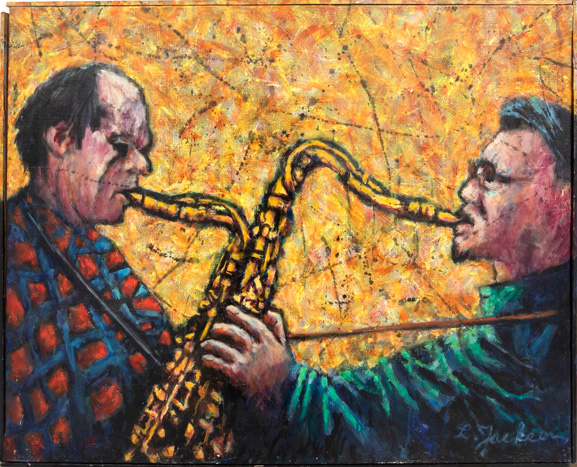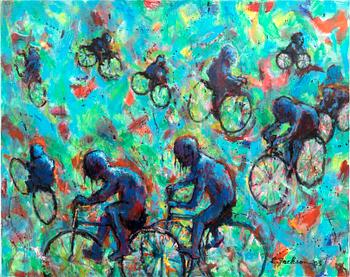An artist's grant from the John Hays Whitney Foundation brought Jackson to Spain at the end of the 1950s, where he found himself in an international artist colony. Later, Jackson was accepted into the Royal Academy of Fine Arts in Stockholm and rented a painting studio in the artist quarter on Bjurholmsgatan on Södermalm for the rest of his life. He was part of the so-called Södergruppen during the 1960s and 1970s. His social circles also revolved around Stockholm's art and jazz scenes.
Jackson's experiences during his childhood and youth shaped his political engagement in class struggle and anti-capitalism. He constantly fought for equality and against racism, war, colonialism, and violence. This is reflected in his works driven by bold, expressionistic chromatism with vivid and often controversial motifs. His friendships with African-American artists from the USA, including Walter H. Williams, Vincent Smith, Sam Middleton, Norma Morgan, Arthur Hardie, Herbert Gentry, and Harvey Cropper, sparked artistic exchange. This influence is present and noticeable in Clifford Jackson's artistic expression.
Despite a tough upbringing, Jackson lived a rich life filled with art, music, literature, travel, encounters, and societal engagement. He shook hands with Fidel Castro and corresponded with Bill Clinton, among other notable interactions.
Jackson exhibited his work worldwide and is represented in numerous museums and public institutions.





















































